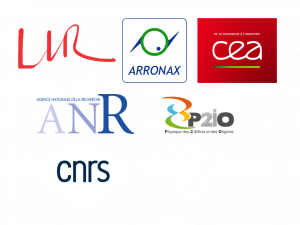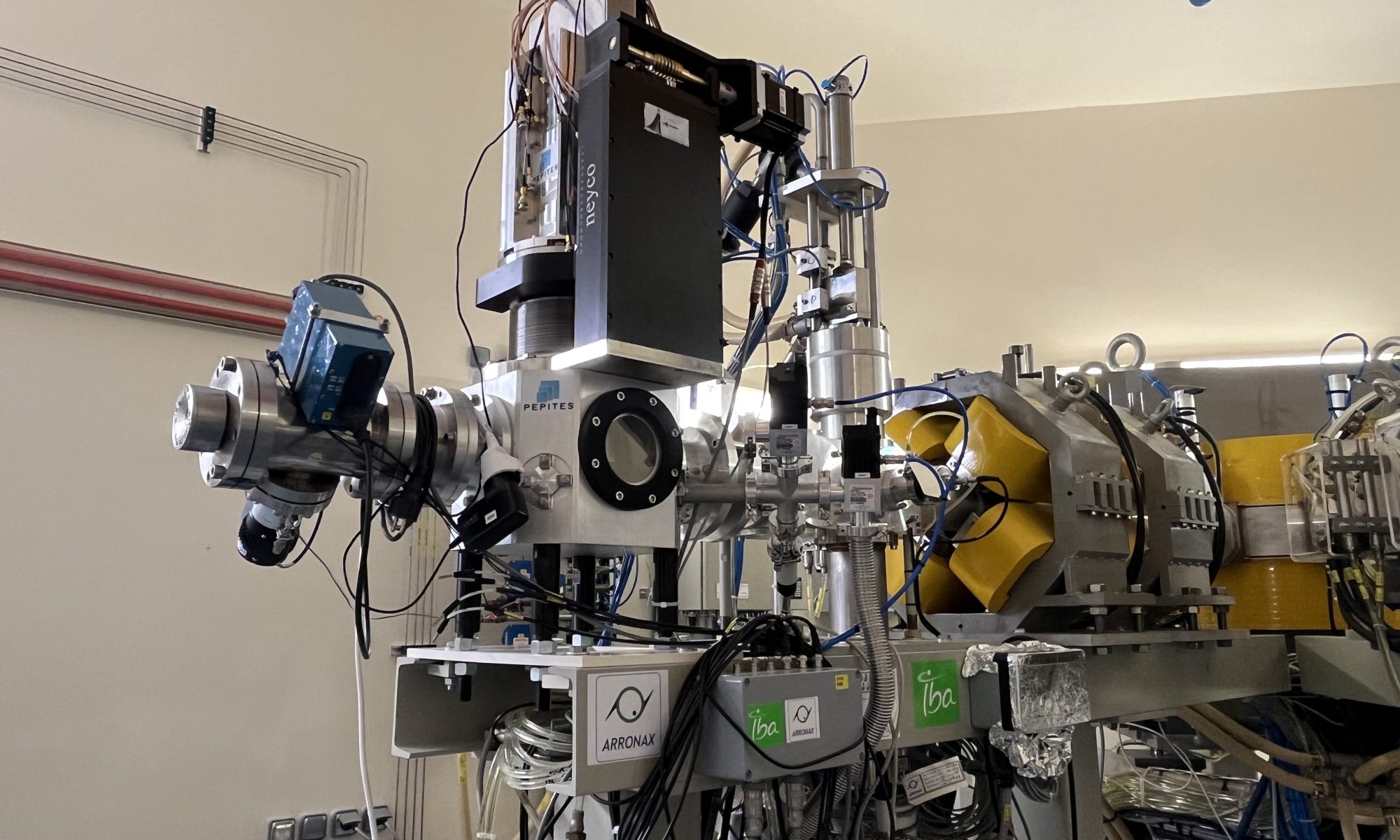PEPITES is a project to develop an ultra-thin charged particle beam monitor for hadrontherapy. We obtained funding from the ANR, which ended in June 2022, with the installation and successful commissioning of a functional 10 micron WET prototype on the AX3 beamline of the ARRONAX cyclotron (St Herblain, France). Today, the project continues, with developments towards Flash therapies and a future collaboration with CNAO (Pavia, Italy).
The PEPITES project aims at realizing a fully working ultra-thin monitor prototype able to permanently operate on mid-energy (O(100 MeV)) charged particle accelerators. The targeted beam intensity ranges from a fraction of pA to about 10 nA. The active part of the prototype is built using thin film techniques and a low noise electronic provides the readout. The system itself is very simple to operate, has a small footprint and is expected to be more tolerant to cumulated doses than existing competing devices. The thinness of the materials employed makes it also less prone to heating from beam interaction. The development was initially motivated by the proton therapy needs, but the large flexibility of the techniques employed opens a range of applications that goes well beyond the medical needs. If particularly adapted in the energy and intensity ranges mentioned, the approach is not limited to these, being applicable well above the higher energy and intensity bounds indicated.
The ARRONAX center has expressed its interest for a 10μm water-equivalent system to be operated for proton, deuteron and alpha beams in energy ranges 17-70 MeV, 8-17 MeV/u and 17 MeV/u for protons, deuterons and alphas, respectively, in the foreseen intensity range. Achieving a working prototype responding to these constraints would demonstrate the viability of the approach.
The project proceeded in four main stages. The signal generation was studied with a simple set-up in the targeted energy ranges and in the medical one, up to 230 MeV, as existing measurements are quite scarce. The radiations hardness of the active part -its individual components and their assembly- was studied to optimize the material choice and construction techniques and to additionally anticipate the operation time that a future system could tolerate. This was conducted under a uniform protocol to allow direct comparison of merits. A dedicated low-noise electronic was designed and realized. It provides the readout for operations over about 5 orders of beam current magnitude. The final system performances were studied in real operation conditions with proton, deuteron, and alpha beams.
Within the framework of the ANR call “appel à projet générique 2017”, PEPITES has formed a consortium led by LLR with teams from ARRONAX and IRFU.
The consortium formerly finished in June 2022.
Meet the PEPITES project members.
PEPITES is a project funded by the ANR and the P2IO Labex.

